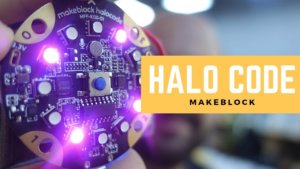Coding for Kids: Single Board Computer Kits for Endless Fun
Posted by VALENTINA PAN

Introduction To Single Board Computer Kits
Single board computer kids come with everything you need to build simple and sometimes complex projects. As the name implies, the kit includes a computer built upon a single board. While these aren’t nearly as powerful as what you’d use in a desktop computer, they’re still impressive.
Electronics and engineering hobbyists have made these single board computers incredibly popular. Of course, these boards are also used in professional applications too, such as within virtual slot machines and ATMs.
Part of what makes single-board computer kits fun for kids is they’re easy to build upon. Plus, they can be programmed again and again to do different tasks.
Teaching Coding For Kids Through Projects

Which sounds more fun? A kid could sit at a desk going through endless lessons or jump into interactive projects. Coding for kids doesn’t have to be boring. Giving kids an engaging project to complete helps them learn without even realizing just how much they’re learning.
Hands-On Increases Fun
There are plenty of apps to help teach coding for kids. These usually teach kids through games, drag and drop block coding and even colorful cartoons as the teachers. However, hands-on increases the fun.
Kids actually get to touch the single board computers and add wires and other components to create their very own simple computers. For instance, they could add an LED light and make it light up by first putting together the components and then using coding software to program the computer board.
Go Beyond Just Coding
Coding for kids teaches just that – coding. But, why stop there? Single-board computers teach kids how computers work along with teaching them more about electronics in general. They’ll also get an introduction to engineering. Think of these kits as all-in-one STEM education tools. The best part is your kid won’t see it as learning, but as an enjoyable project to play with.
Teaches Engineering And Coding
Instead of just coding, kids actually have to build items using the single-board computer kits. They have to learn how components fit together and how to create what they’re envisioning. For example, they can create their very own Bluetooth controlled car, but kids have to pay attention to how they design their car to ensure it works properly.
Of course, when they get done building, they jump into coding. When they start with simple projects, they get a great introduction to both coding and engineering. As they learn, they’ll start trying more advanced projects and expanding their skills.
Enter Robotics Competitions
Coding for kids doesn’t have to be only for kids. Parents should definitely get involved too. One of the best ways to do this is through robotics competitions. Kids can work individually, with parents or in teams to build robots and compete.
In addition to robotics competitions, there are also single-board computer groups that meet all over the world to learn new skills, meet new friends and share their love of electronics and coding. If you’re looking for a social way to teach coding for kids, look for local groups, especially Arduino and Raspberry Pi groups.
Picking The Right Single Board Computer
While single-board computer kits are a great way to teach coding for kids, you first have to pick the right one for your needs. As you might imagine, there are quite a few kits to pick from. Each works a little differently and has its own pros and cons. While the following isn’t the only boards available, they are the most popular, which means you’ll have an easier time finding project ideas and resources to help you learn how to use them.
Raspberry Pi
Raspberry Pi is one of the most popular single-board computers and one you’ve likely heard of already. The board was originally designed specifically to offer a low-cost way to teach kids of all ages more about coding and computers. It was originally based off of the BBC microcomputer. It’s now mainly used to teach coding for kids in classrooms.
However, it’s become a hobbyist favorite as well. It’s also a great way for parents to teach their kids coding concepts too. It’s not the most powerful option available, but the Raspberry Pi community is welcoming to all levels and ages. This makes it a great entry-level single board computer.
Arduino
Arduino is quickly becoming just as popular as Raspberry Pi for teaching coding for kids. One thing that sets Arduino apart is its an open-source technology. This means it’s easier to create your own versions. If you’re looking to create both simple and highly complex projects, this might be the perfect board for your needs. The official Arduino community also provides an endless supply of ideas for everyone from kids to professionals.
If you’re searching for great projects for kids, Makeblock has put together a list of eight fun projects to help parents and teachers teach coding for kids at home or in the classroom.
Cubit
Cubit is a little bit different. It originally started as a Kickstarter project as a plug and play board. This is a great starter for smaller kids or those completely new to single-board computers. As a coding for kids teaching tools, it focuses more on teaching concepts versus syntax, so kids don’t get so frustrated.
Kids build upon the board with additional cube kits that add various functions. It’s easier to build with but offers a wide range of projects.
BeagleBoard
BeagleBoard is another open-source single-board computer kit. In addition to basic coding for kid’s concepts, kids can also dive into artificial intelligence concepts too. There are a variety of boards to choose from based on the power you need.
The goal with these boards was to create an affordable way to bridge the gap between software and electronics. Some of the creators even worked for Texas Instruments. While there aren’t as many resources as some other major brands, you’ll still find plenty of great projects and documentation to get started.
Curiosity Development Platform
If you’re teaching coding for kids and are ready to move on to a more advanced single board computer kit, the Curiosity Development Platform might be a great choice. In fact, these boards are microcontrollers, meaning you can do much more with them. They’re not a great introduction, but a perfect way to move on to more complex projects.
If you’re new to microcontrollers, Curiosity boards make a great starting point. However, start with one of the other single board computers on this list if you’re new to electronic building and coding.
Halocode

Makeblock is dedicated to increasing kids’ interest in coding, electronics, computers, and robotics. That’s why the Makeblock Halocode was created. It was built specifically to teach coding for kids in a fun, interactive way. It even has built-in Wi-Fi to make it easier to program and control.
Halocode is made to use with mBlock, which is Makeblock’s block-based programming tool. The board is ideal for both beginners and more advanced learners. Not only do kids learn basic coding, but how to build real-world IoT and smart home gadgets. It’s one of the best options for teaching kids of all ages and offers documentation for some truly incredible projects.
Makeblock designs a wide variety of STEAM learning tools and software, including Halocode. Visit our site to find the perfect way to teach coding for kids, among other skills.

